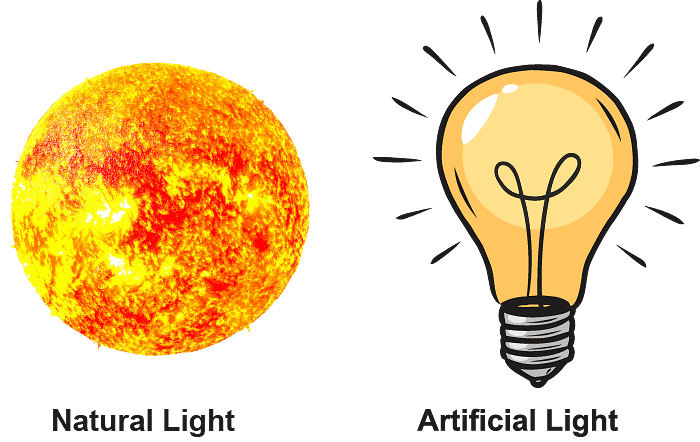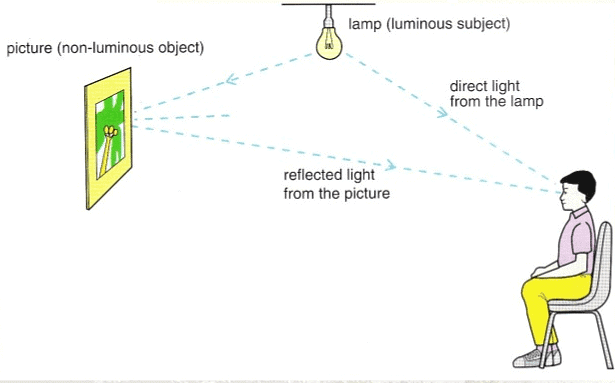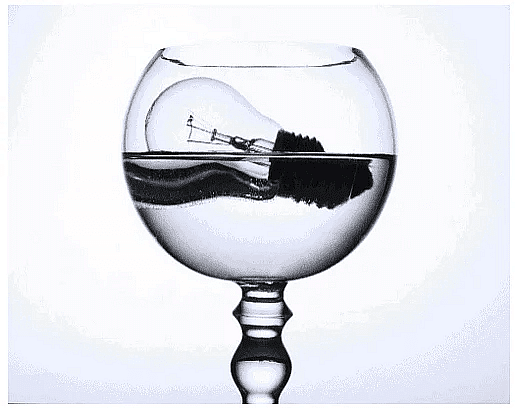Light and its Properties | Science Class 5 PDF Download
| Table of contents |

|
| What is Light? |

|
| Sources of Light |

|
| Properties of Light |

|
| Types of Objects |

|
| Shadows |

|
What is Light?
- Have you ever wondered how we are able to see the world around us?
- The colours of a rainbow, the twinkling of stars, and the warm glow of the sun are all made possible because of light.
- Light helps us see everything, and without it, the world would be completely dark.
During photosynthesis, the green plants prepare food using the energy of sunlight. Light is, therefore, a form of energy. So, we can say that when we eat food, the energy we get is actually light energy stored in food!
Sources of Light
Something that gives off light is a source of light. Sources of light can be natural or artificial.

- The sun, stars and glow-worms are natural sources of light.
- The sun is our main source of light.
- Candles and electric bulbs are artificial sources of light.
How are we able to see things?
- Light from a source such as an electric bulb falls on a picture.
- A part of it is bounced off.
- When this bounced light falls on our eyes, we can see the picture.
- This bouncing off of light by objects is called reflection of light.

Properties of Light
1. Light Travels from One Place to Another
- When we switch on the light in a dark room, the whole room is filled with light.
- The sunlight from the sun travels in all directions and reaches the earth, stars, and the moon.
- Light spreads in all directions from its source unless it is restricted by some barrier.

2. Light Travels in Straight Lines
- Light travels in a straight line as thin beams of light called rays.
- It cannot travel in the bent tube to reach our eye.
- The movement of light in a straight line is known as rectilinear propagation of light.

3. Light is Made of Seven Colors
- You must have seen a rainbow in the sky sometimes.
- It is usually seen after it rains.
- When sunlight passes through the raindrops, it gets separated into seven colours – violet, indigo, blue, green, yellow, orange and red.
- So, we can say that the white light that we get is actually made up of seven colours.
- We can also see a rainbow in water drops of fountains or water sprinklers if sunlight falls on them at a certain angle.

Types of Objects

- Let us discuss them in detail.

Transparent Objects

- You can see clearly through a plane glass windowpane because glass allows almost all the light falling on it to pass through it.
- Materials that allow almost all light to pass through them are called transparent materials.
- Air, pure water and some plastics are also transparent.
Opaque Objects

- You cannot see through a piece of wood because it does not allow light to pass through it.
- Materials that do not allow any light to pass through them are called opaque materials.
- Metal, cardboard and rubber are also opaque.
Translucent Objects

- Look at a lighted torch through tracing paper.
- You will be able to see the glow of the torch but not the torch itself.
- Tracing paper allows some light to pass through, but not enough to enable you to see clearly through it.
- Materials that allow only some light to pass through but not enough to see clearly through them are called translucent materials.
- Butter paper and frosted glass are also translucent.
Shadows

- A shadow is formed when something blocks the path of light.
- The area behind the book does not get any light, and so it remains dark.
- This dark area is the shadow of the book. A shadow is always black, whatever the colour of the object.
 For a Shadow to be formed you need
For a Shadow to be formed you need
Size of the Shadow
The size of the shadow depends on the distance between the source of light and the object.
So we see that:
1. When the distance between the source of light and the object is more, the size of the shadow is smaller.
2. When the distance between the source of light and the object is less, the size of the shadow is bigger.

- Depending on the position of the Sun, shadows are of different shapes and sizes.
- Sometimes they are bigger and sometimes smaller.
- A shadow always forms on the opposite side of the source of light.

|
43 videos|198 docs|45 tests
|
FAQs on Light and its Properties - Science Class 5
| 1. What is light and why is it important? |  |
| 2. What are the main sources of light? |  |
| 3. What are the properties of light? |  |
| 4. What are the different types of objects based on how they interact with light? |  |
| 5. How are shadows formed? |  |




















